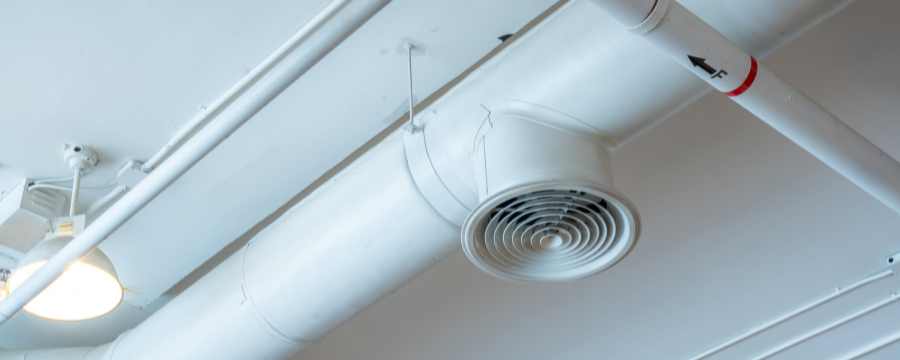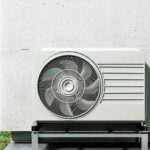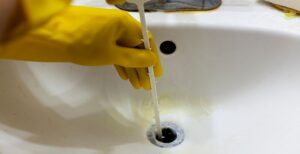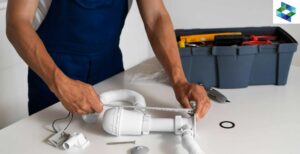Achieving energy efficiency in your home is paramount, and a key aspect of this is learning how to find air leaks in your house and tackle them effectively.
Air leaks can increase energy bills and compromise your home’s comfort levels. This comprehensive guide is designed to identify and fix air leaks, ensuring your home remains comfortable and energy-efficient.
Understanding Air Leakage

Air leakage signifies the uncontrolled entry of outside air into your home and the escape of conditioned air.
This not only wastes energy but can also make your home less comfortable. Understanding how to find and address air leaks in your house is essential for maintaining an energy-efficient home.
Air leakage represents the unintentional infiltration of external air into your dwelling and the loss of conditioned air from within.
This phenomenon not only escalates energy consumption but also detracts from the comfort of your living space.
Grasping how to identify and remediate air leaks in your abode is pivotal for upholding an energy-conserving household. Detecting air leaks involves a keen eye and sometimes subtle cues.
In summary, understanding and tackling air leakage is a crucial aspect of home maintenance.
Knowing how to check for air leaks and taking action to seal them not only enhances your living environment but also supports a more sustainable and cost-effective lifestyle.
How to Find Air Leaks in Your House

Building airtightness in your home is more than just an annoyance; it represents a significant inefficiency in your heating and cooling systems, leading to higher energy consumption and a larger carbon footprint.
Addressing these leaks not only improves your home’s comfort but also its energy efficiency. This guide will delve into the common sources of air leakage and outline methods to detect and seal these pesky leaks.
Why It’s Important to Fix Air Leaks

Air leaks can cause your energy usage to spike by up to 30%, translating to higher utility bills and a harder-working HVAC system.
This extra strain can lead to maintenance issues and potentially shorten the lifespan of your system. Beyond just temperature control, sealing leaks can enhance your home’s air quality, contributing to a safer living environment.
Common Sources of Air Leakage

Air leaks can emerge from various areas in your home, often in places you might not expect. Common sources include:
- Attic hatches
- Piping and wires
- Plumbing vents
- Basement walls
- Chimneys and recessed lighting
- Windows, doors, and ductwork
- Baseboards and garages
- Understanding where to look is the first step in detecting these leaks.
How to Find Air Leaks in Your House: 6 Methods

Detecting air leaks might seem daunting, but several strategies can help you uncover even the most elusive leaks:
Visual Inspection
Regularly inspect your home’s interior and exterior for any visible signs of wear and tear on weatherstripping and caulking.
A simple hand test near suspected areas can also reveal temperature changes indicative of leaks.
Building Pressurization Test
This DIY test enhances your home’s ability to reveal leaks. By Turn off combustion appliances and close all openings, then use exhaust fans to depressurize your home. You can use an incense stick to identify leaks as the smoke wavers.
Air Leak Detectors
Devices like smoke pencils can visually demonstrate air movement, indicating the presence of leaks.
For a more high-tech solution, ultrasonic air leak detectors use sound waves to pinpoint leaks, offering a highly accurate detection method.
The Flashlight Method
A simple yet effective technique for larger leaks, shining a flashlight over potential gaps during the night with someone on the other side can reveal leaks through visible light rays.
Dirty Attic Insulation
Attic insulation that appears darkened or frosty can indicate air leaks, with the dirt or frost as a visual marker of air movement.
Blower Door Test
This professional test depressurizes your home to make leaks more apparent. While DIY methods exist, professional tests can provide a comprehensive overview of your home’s air tightness.
Protecting Your Home
While DIY methods can be effective, sometimes professional assistance is necessary to address air leaks thoroughly. Ensuring your home is adequately sealed enhances comfort and contributes to its overall energy efficiency.
Common Problem Areas
To effectively check for air leaks in your house, focus on areas prone to leakage, such as windows, doors, and where the foundation meets the bottom of exterior walls.
Identifying where cold air leaks in your house can be significant in winter months, as these leaks can significantly impact your heating efficiency.
Tools and Equipment Needed
Equipping yourself with the right tools is the first step in home air leak detection.
Items such as incense sticks or a smoke pen can help visualize air movement, indicating where leaks may occur.
Visual Inspection Techniques
Begin with a thorough visual inspection both inside and outside your home.
This can help you detect drafts in your house and identify any visible signs of air leaks, such as worn weatherstripping or gaps in caulking.
Blower Door Test
For a more comprehensive assessment, consider a blower door test.
This professional test can help you understand how to check your house for air leaks comprehensively, pinpointing areas of concern and helping you prioritize repairs.
Weather Stripping and Caulking
Simple DIY fixes like adding weather stripping to doors and windows or caulking gaps can effectively seal air leaks in your home.
These measures are particularly useful for addressing cold air leaks and improving overall insulation.
Insulation
An insulation check can reveal hidden air leaks, especially in attics and basements.
This step is crucial for those wondering how to find heat leaks in their house, as inadequate insulation can lead to significant energy losses.
Ductwork Inspection
Inspecting your ductwork is vital for detecting air leaks that may not be immediately visible.
Leaky ducts can lead to significant energy loss and uneven heating or cooling in your home.
Sealing Strategies
After identifying leaks, develop a targeted approach to seal them. Start with the most significant leaks and use appropriate materials and methods to ensure a tight seal.
Professional Assistance

If you need help finding and fixing air leaks in your house or the problem seems extensive, professional help can be invaluable.
Energy auditors and HVAC professionals use advanced air leak detection methods to identify and rectify leaks efficiently.
Conclusion
Life Mechanical expertise in modern plumbing solutions extends beyond routine maintenance, playing a crucial role in enhancing your home’s energy efficiency and comfort.
Identifying and sealing air leaks is fundamental in this endeavour. With advanced techniques and tools, Life Mechanical can help you detect thermal leaks, ensuring a thorough approach to insulation.
While DIY methods might suffice for minor leaks, Life Mechanical’s emergency plumbing services offer a comprehensive solution for more significant issues.
Their professional assistance guarantees that your home is well-insulated and benefits from the latest in energy-efficient plumbing technologies.
Sealing air leaks is vital, and with Life Mechanical’s modern plumbing solutions, you can significantly reduce energy costs and improve indoor comfort.
Whether you opt for a DIY approach or professional help, Life Mechanical ensures your home’s energy efficiency is optimized, making it a worthwhile investment for a comfortable and sustainable living environment.
FAQs
How do you find air leaks?
Finding air leaks involves a combination of visual inspections, using tools like incense sticks or smoke pens to detect drafts and professional assessments like blower door tests. Focus on common problem areas such as windows, doors, and where different building materials meet.
What is an “air leak detector”?
An air leak detector is a tool or device used to identify air leaks in a building. It can range from simple tools like smoke pens or incense sticks, which show air movement, to more sophisticated devices like infrared cameras that detect temperature differences caused by air leaks.
What is a “thermal leak detector”?
A thermal leak detector is a device that uses infrared technology to measure temperature variations on surfaces.
These temperature differences can indicate the presence of air leaks, as escaping indoor air or incoming outdoor air can alter the surface temperature around a leak.
What are the signs of air leaks in a house?
Signs of air leaks include noticeable drafts, differences in temperature from room to room, higher-than-expected energy bills, and issues with moisture or mould around windows and doors. You might also see frost accumulation inside windows or doors during colder months.
How to check for air leaks around windows?
To check for air leaks around windows, conduct a visual inspection for gaps and cracks in the caulking and weather stripping.
You can also hold a lit incense stick or a thin piece of toilet paper near the window edges; movement of the smoke or paper indicates air leaks.
Applying a soapy water solution around the window frame and watching for bubbles when the wind blows is another effective method.
How do you locate drafts in the house?
Locating drafts in the house can be done through a detailed inspection.
Feel for cold air near suspected areas on a windy day, use a smoke pen or incense stick to visualize air movement, or employ a thermal leak detector to identify temperature discrepancies.
Pay special attention to areas where different materials meet, such as where walls connect to floors or around window and door frames.
Addressing air leaks is not just about improving comfort; it’s also about positively impacting your energy consumption and the environment. Proactively identifying and sealing leaks contributes to a more sustainable and energy-efficient home.







